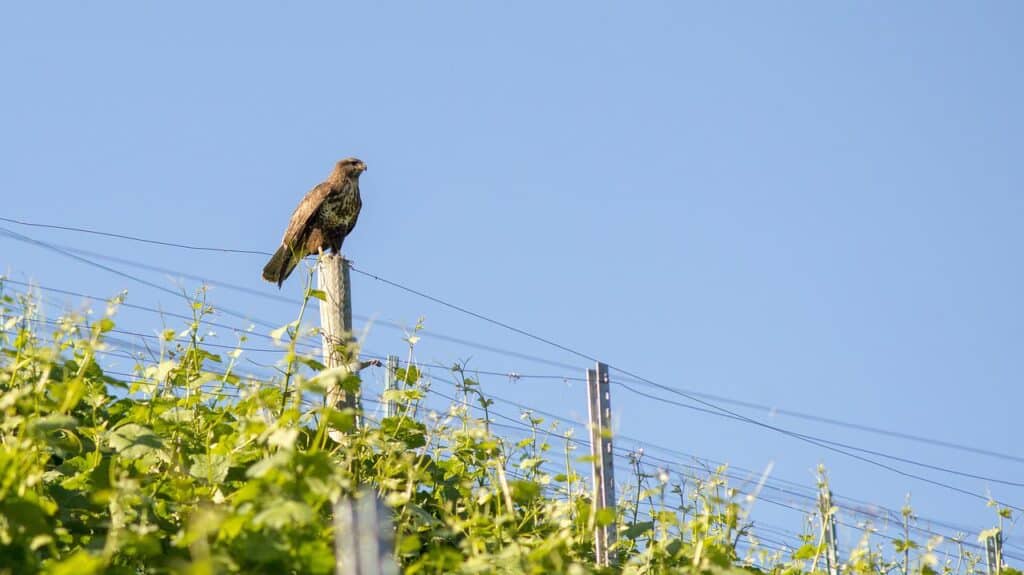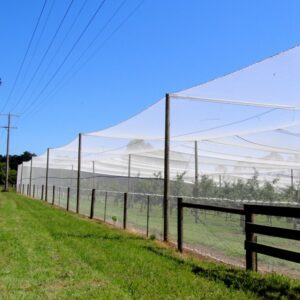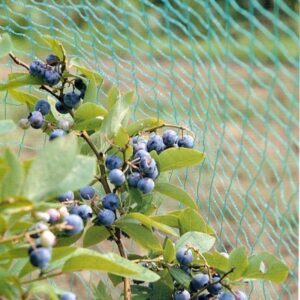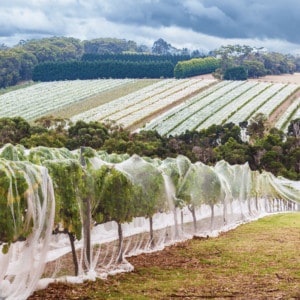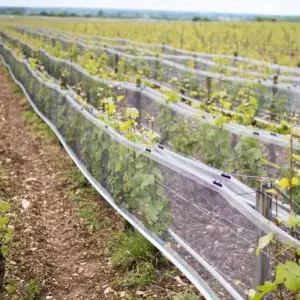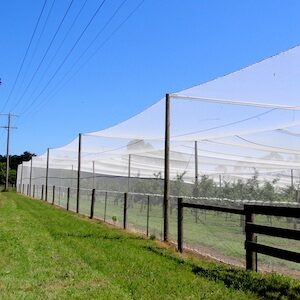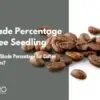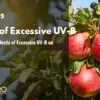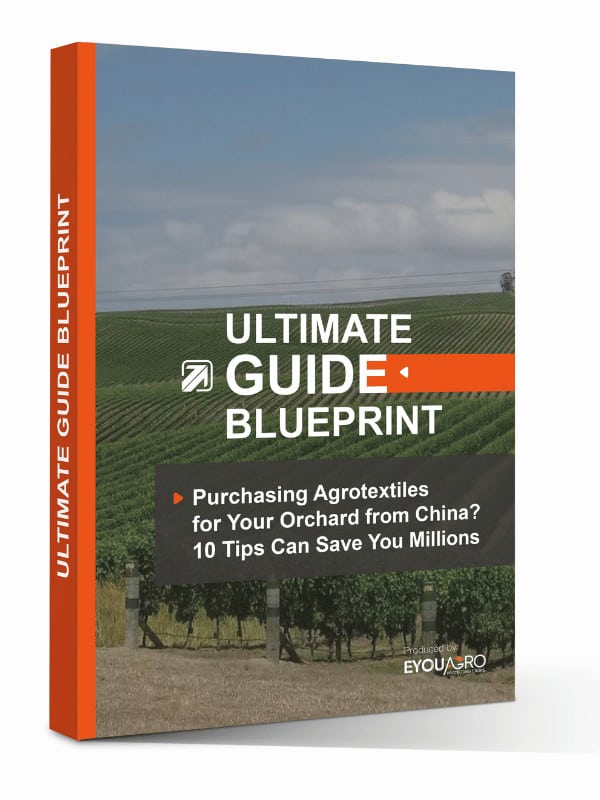Grape vineyards easily fall prey to a variety of pest birds. Bird species such as robins, finches, starlings, blackbirds, and mockingbirds are common grape pests. When you notice a half-eaten fruit, multiple peck marks, or fruits disappearing completely, it is a sign of bird damage on your grapes.
Birds may drop grapes to the ground, making them unharvestable. Damaged grapes that fall or remain on the tree can contain diseases and insect pests, putting the surviving crop at risk. This contributes to low yields in the vineyard, negatively affecting the wine industry.
This article will talk about bird damage to the grape and wine industry and how to prevent them.
Why You Should Prevent Bird Damage to Grapes and Wine Industry
There are several reasons why you should prevent birds from damaging your grapes.
- Birds will not only cause havoc through grape loss, but they also cause secondary spoilage through bacteria, molds, yeast, and insect damage.
- Bird damage is also known to result in unnecessarily reduced harvest yields of this premium fruit.
- The poor standard of the grapes causes delays and interruptions during the manufacturing process resulting in inferior quality wine.
- Low-quality wine reduces your profit margin.

How to Prevent Bird Damage to the Grape and Wine Industry
Grape producers use various bird control approaches and skills to prevent crop damage. Methods used to keep the annoying birds from grapefruits are: bird nets, streamers, electronic bird distress calls, scare eye balloons, and propane-fired bird-scaring cannons. Let’s take a closer look at some of the techniques used.
1. Chemical Bird Repellant
You can use chemical bird control to keep birds away from your precious crops. It may not affect the birds, humans, and other animals.
It is a non-lethal and non-toxic bird repellent chemical. It effectively deters different birds such as geese, pigeons, starlings, and grackles. Its application process is simple via aerial spraying or fogging. The chemical takes two weeks before it wears off, and you have to apply it again.
This bird repellent tactic is not friendly to the environment.
2. Lasers
A laser is an ideal method to keep the birds away. The laser is an enlarged green beam that the birds perceive as a real object.
The birds cannot identify the shaft with its constant motion, making the area appear uninhabitable and driving them elsewhere. Automated lasers will protect around 20 to 40 acres of your vineyard, providing 24-hour protection and reducing bird damage.
3. Bird-repelling Laser Robot
One of the sensory and high-tech solutions for bird control is laser bird repellent. This bird repellent approach takes advantage of its natural inclinations; when a laser beam approaches, birds perceive it as a predator and fly away to seek safety.
This technique is a reliable bird control strategy because it is non – destructive and easy to implement. The vineyard with laser units reduces birds by saving you many fruits.
4. Trapping
You can use trapping to control house finches, starling, house sparrows, and crowned sparrows in your vineyards. For Trapping to be successful, you must consider the behavioral patterns of the birds you want to control.
These traps use live birds as bait to lure more birds you need to eradicate. Place traps in appropriate locations with adequate water, food, shade, and roosting areas to keep the birds alive.
Trapping is best done by a professional. Trapping for crown sparrows and house finches must be done under the supervision of the area agricultural commissioner.
Trapped birds are euthanized using a CO2 chamber. Remember to keep some birds alive to serve as decoys in the future.
5. Visual Deterrents
Birds react to motions and other objects that look similar to their adversaries. Visual deterrents are insufficient for your vineyard protection when used alone and are usually combined with acoustic technologies to improve results.
Some examples of visual barriers are:
- Kites shaped like birds of prey
- UAVs and model aircraft
- Tapes and streamers
6. Predatory Birds
Some vineyard owners have tried to put up falcons and hawks to reside in their vineyards by erecting nesting poles. In contrast, others have hired falconry companies to regulate the birds.
When large birds predators like falcons are active in the wine region, fruit-eating birds like starlings tend to avoid the area.
7. Bird Netting
Netting is a tried and tested method of keeping birds away. You’ll have to find a strong vineyard bird netting that’s the right size for your vineyard. Note that even the tiniest gap in the netting can allow a small bird to sneak into your vineyard and cause havoc.
The vineyard netting is ideal for keeping birds away from damaging your wine grapes when you install it correctly.
When to Net
The perfect time to net your grapevine is right after bunches form, usually around mid-spring. Grapes varieties begin to ripen in August, revealing significant and colorful grapes in the early summer. Grapes establish their color a few weeks before they become fully ripe.
It would be best to net your vineyard before the birds locate them before the grape bunches become soft or lose their ultimate color. Determined birds look for any weak spot in the net.
If your net is not secured, the birds will fly up under the net if you fail to secure it well. Keep the netting on until you are ready to harvest the grapes.
How to Net
Although netting your grapevines early on requires removing the net to inspect the grapes, it is the best option for keeping the birds away. Wrap the net around the entire vine, cover the trellis and tie the bottom shut with garden twine.
You’ll need to tie it several times to ensure no gaps under the vine; hungry birds can squeeze through the smallest openings. If necessary, secure the vineyard netting to the stem or trellis to ensure that it is sealed at the bottom.
Conclusion
Grapevine owners use a wide range of bird control methods and tactics such as bird nets, birds of prey, trapping, electronic bird distress calls, and propane-fired bird-scaring cannons to prevent bird damage.
One common strategy is to protect crops with a physical barrier, such as nets. This strategy is highly effective at preventing bird damage to the grapes and wine industry.
EyouAgro vineyard netting protects your vineyard. Protecting your vineyard with vineyard netting is a cheap solution for growing healthy grapes. EyouAgro vineyard netting can help you avoid bird damage.
For more information about vineyard bird netting or other netting products, get in touch with Eyouagro or send your request to info@eyouagro.com.

